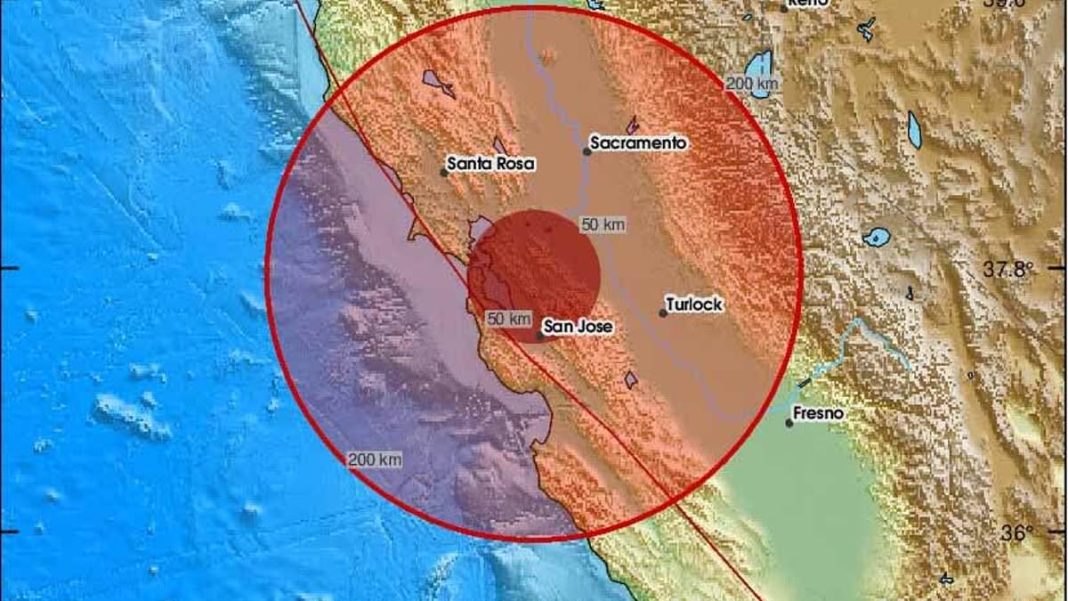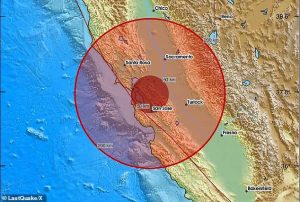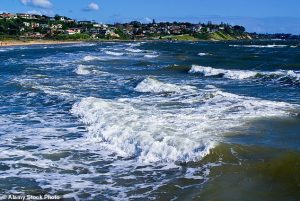Key Takeaways
- A 4.1 magnitude earthquake struck California’s Central Coast near Templeton
- Over 600 people reported feeling tremors across hundreds of miles
- USGS confirmed no tsunami threat despite initial concerns
- Scientists warn of 21% chance of magnitude 3+ quakes in the coming week
A 4.1 magnitude earthquake rattled California’s Central Coast on Tuesday, sending shockwaves hundreds of miles across the region and triggering widespread reports of tremors from Salinas to Lompoc.
The quake struck at 9:45 AM PT with its epicenter near Templeton, close to the dangerous San Andreas Fault. The US Geological Survey confirmed the earthquake produced moderate jolts strong enough to potentially shatter windows and overturn unstable objects.
Immediate Impact and Response
More than 600 residents reported feeling the tremor to the USGS, with numbers continuing to climb. The location immediately raised tsunami concerns, but authorities quickly confirmed there was ‘No Tsunami Warning, Advisory, Watch, or Threat.’
Officials in British Columbia, Canada even notified their citizens about the California earthquake while emphasizing ‘There is NO tsunami threat to BC.’
Ongoing Seismic Risks
The USGS warns there’s a 21 percent chance of a magnitude 3 or higher earthquake striking in the next week, along with a three percent chance of a magnitude 4 or higher quake.
Today’s event received a ‘MMI V’ rating on the USGS ShakeMap, indicating moderate shaking.
‘The San Andreas Fault can generate the region’s largest magnitude earthquakes (up to about M8.2),’ said the USGS.
The ‘Big One’ Threat
Experts remain concerned about the potential for a major earthquake in California. Angie Lux, project scientist for Earthquake Early Warning at the Berkeley Seismology Lab, previously stated experts are ‘fairly confident that there could be a pretty large earthquake at some point in the next 30 years.’
According to the Great California Shakeout, the ‘Big One’ could cause approximately 1,800 deaths, 50,000 injuries and $200 billion in damages. Historical patterns suggest the San Andreas Fault causes a major quake every 150 years – and the last significant one occurred 167 years ago.
California’s Seismic Activity
California ranks as the third most seismically active US state after Hawaii and Alaska. Data shows California has experienced over 14,000 tremors this year, though Alaska approaches 60,000.
However, California suffers more earthquake damage due to its dense population and extensive infrastructure.
The USGS also noted Southern California’s volcanic and geothermal areas, including Coso and the Salton Sea region, where ‘hot fluid or magma is moving through the crust, causing local stresses and fracture movement.’
These regions frequently experience seismic swarms – clusters of earthquakes without a clear mainshock that can include thousands of events lasting from hours to years.







